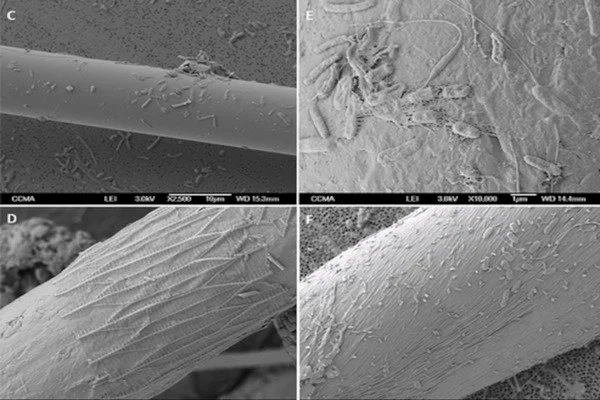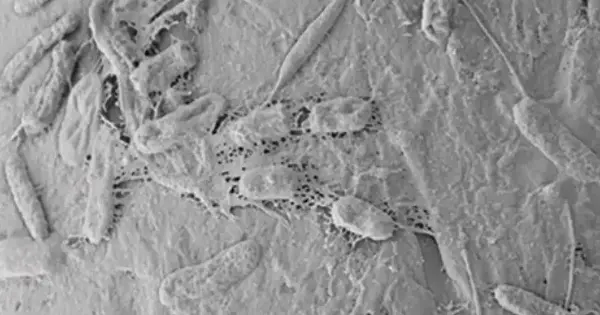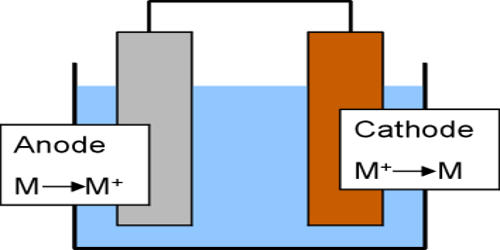Microfibers are extremely small fibers that are shed from synthetic textiles, such as those made from polyester and nylon. They are a major contributor to marine pollution and can be harmful to marine life. In the Mediterranean Sea, microfibers have been found to harbor bacteria and other microorganisms, which can lead to the formation of biofilms on the fibers.
These biofilms can provide a habitat for bacteria and other microorganisms, and can also serve as a vector for the transport of pollutants and pathogens through the marine environment. The presence of microfibers in the Mediterranean Sea is a concern because they can accumulate in the food chain and potentially have negative impacts on the health of marine organisms and ecosystems.
According to a new study led by Maria Luiza Pedrotti of Sorbonne Université and published on November 30 in the open-access journal PLOS ONE, nearly 200 species of bacteria colonize microfibers in the Mediterranean Sea, including one that causes food poisoning in humans.
Climate change also has an impact on the spread of this potentially pathogenic bacteria. Temperature has been linked to an increase in Vibrio spp. and the emergence of infections in studies. At the time we discovered this vibrio, coastal summer temperatures ranged from 25.2-26.5°C, but this year, at the same location, they reached 29°C.
Maria Luiza Pedrotti
Synthetic and natural microfibers from plastic pollution, the textile industry, and fishing activities have increased dramatically in the environment, becoming the most common type of particle in the ocean. These microfibers are likely to endanger aquatic ecosystems and human health because, once colonized by microorganisms, they smell like food and are consumed by marine organisms. Because of their persistence, the microfibers are likely to accumulate in marine organisms as they move up the food chain.
Researchers used advanced microscopy techniques and DNA sequencing to identify microorganisms living on microfibers collected from the northwestern Mediterranean Sea to determine what types of bacteria live on floating microfibers. They discovered that each microfiber contains an average of 2,600 cells. These cells are from 195 different bacterial species, including Vibrio parahaemolyticus, a potentially dangerous bacterium that causes seafood poisoning.

This new study is the first to report the presence of pathogenic Vibrio species on microfibers in the Mediterranean Sea. The discovery is important for assessing health risks, because the bacterium’s presence can be a threat to bathing and seafood consumption.
The study also raises concerns about the environmental impact of microfibers. The increasing amount of persistent plastic waste in the environment may be transporting dangerous bacteria and other pollutants throughout the ocean, increasing the risk of contamination when compared to short-lived natural particles such as wood or sediments.
Maria Luiza Pedrotti adds: “Climate change also has an impact on the spread of this potentially pathogenic bacteria. Temperature has been linked to an increase in Vibrio spp. and the emergence of infections in studies. At the time we discovered this vibrio, coastal summer temperatures ranged from 25.2-26.5°C, but this year, at the same location, they reached 29°C.”
















